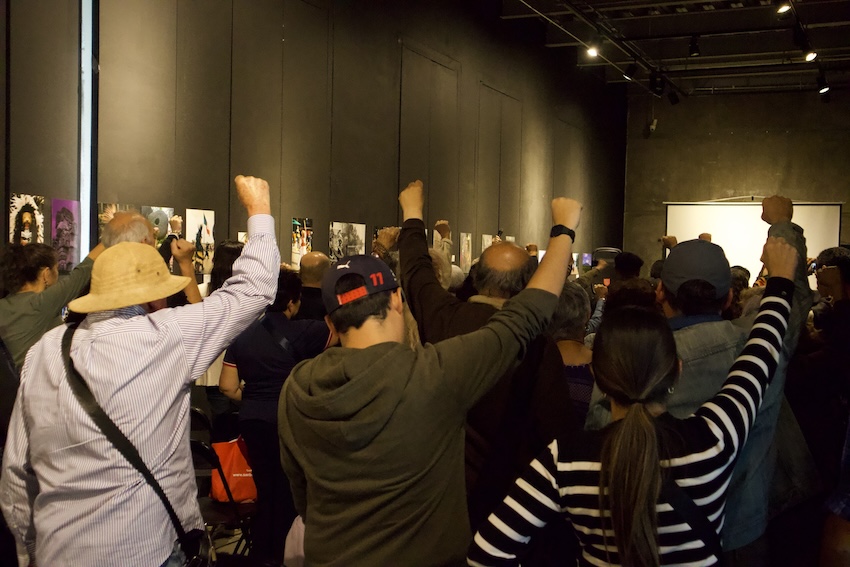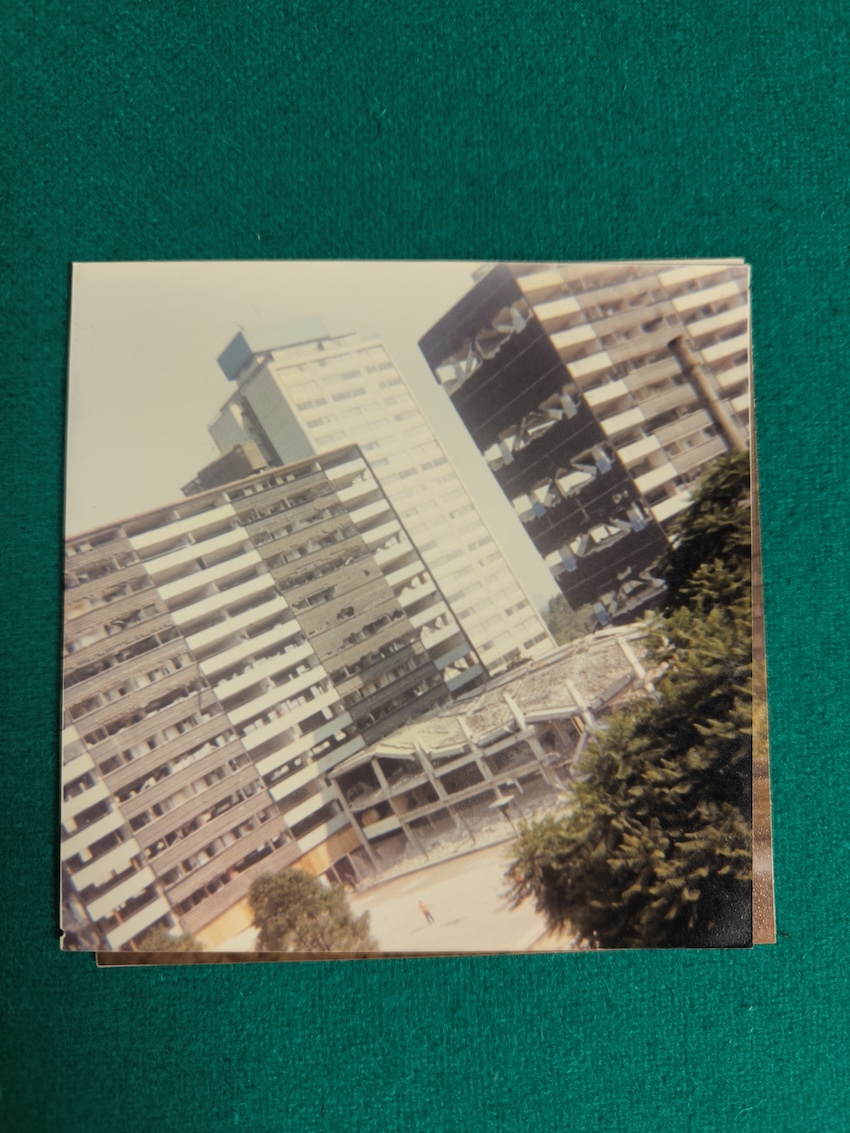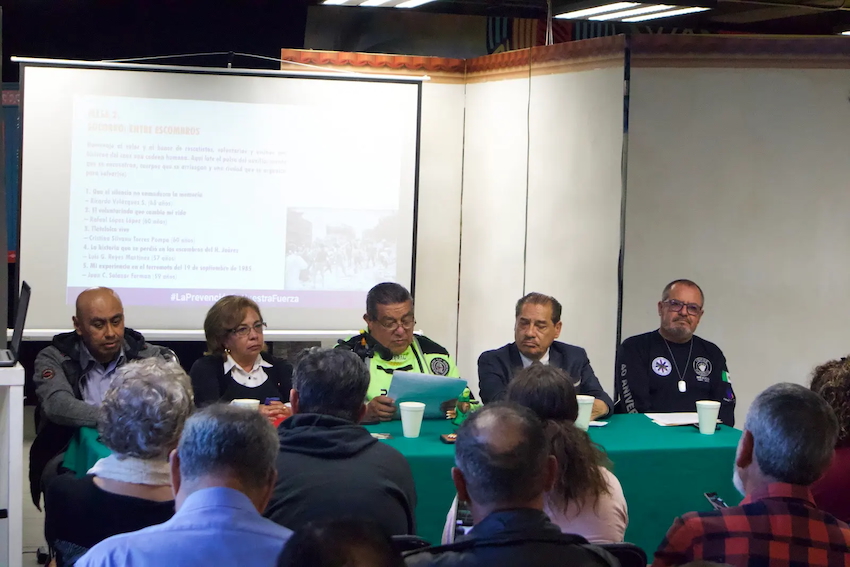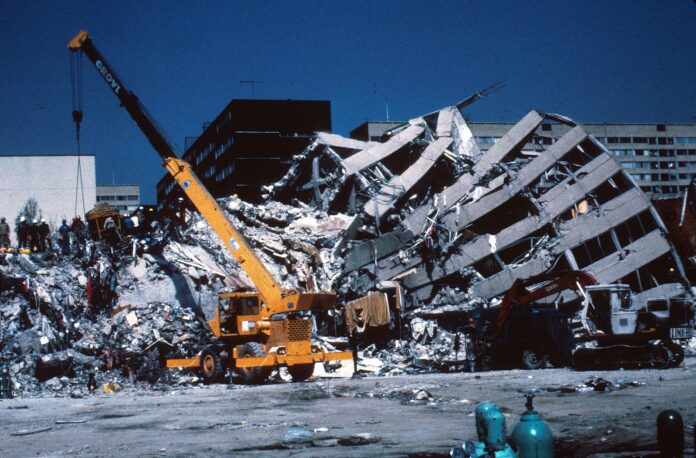Forty years after Mexico City’s devastating 1985 earthquake, survivors gathered at the El Rule Cultural Center to read their personal narratives of a disaster that continues to mark the city and its people.
“Stunned, we watched as the building directly across from our house crumbled,” recalls Cristina Silvana Torres Pompa, a resident of the Tlatelolco neighborhood. “All we could do was cry, hug each other, and pray while everything creaked and we heard glass breaking. The earth shook so violently that it shook us to our core.”
Survivors share memories of the 1985 earthquake in Mexico City

At 7:19 a.m. on September 19, 1985, an earthquake with a magnitude of 8.1 collapsed hundreds of buildings and killed an estimated 10,000 people (although some death toll estimates are as high as 45,000).
Cristina Silvana, along with 29 other survivors, shared her story at an event titled “Living Books — After the earthquake: Voices that rebuild,” which the Ministry for Comprehensive Risk Management and Civil Protection organized on September 17 and 20 to commemorate the 40th anniversary of the disaster.
Living Books was designed to be “an exercise of memory,” Johan Antonio Toro Marín, the Ministry’s Resilience Policy Coordinator and organizer of the event, explained, highlighting the importance of such a platform. “We realized that memory, and memory of risk and disaster, is very short,” he said, “and all the people who lived through 1985 are now over 50.”
As Toro Marín noted, younger generations and those who have migrated to Mexico’s capital might be oblivious to what was lost in the rubble. Nevertheless, the stories shared at the “Living Books” event demonstrated that the 1985 earthquake continues to affect countless lives, prompting many to reassess their perspectives and priorities.
A chance to say ‘thank you’
16-year-old Carolina Rojas Ávila was still asleep in her family’s apartment in La Roma’s Benito Juárez housing complex when the earthquake hit. Woken by a strong movement, she watched in horror as the building collapsed around her.
“My mother and I looked at each other, and I knew she was saying goodbye to me. The roof collapsed on top of my mother and brother; they disappeared right before my eyes,” Carolina tells the audience, reading from her story. “The floor began to rise, causing me to slide until my legs were covered in debris. I just closed my eyes because I knew it was the end.”

Hours later, three strangers pulled her and her family members from the rubble of their home with their bare hands, but many of her friends from the building did not survive.
She never found out who her rescuers were. “I could not thank them, and that feeling stayed with me forever. Now people look at me a little strangely because I am grateful for everything. I never miss the chance to say thank you.”
A calling to become a rescuer
While people like Carolina had to adapt to a life without their home and loved ones, others became rescue workers almost overnight.
“I wanted to be a veterinarian; that was my dream. However, the earthquake of September 19, 1985, changed the course of my life,” said Rafael López López, who shared his story titled “The Volunteer Experience That Changed My Life.”
The day after the earthquake, Rafael was walking through the disaster-stricken city center when a dump truck drove by, looking for volunteers for rescue efforts: in the Tlatelolco neighborhood, the enormous Nuevo León residential building had collapsed entirely. In response, the 20-year-old grabbed a metal helmet from his collection of military memorabilia and joined the improvised brigade. Over the following weeks, Rafael and other mostly inexperienced volunteers working in Tlatelolco pulled hundreds of bodies from the rubble. Against all odds, they managed to save a few survivors.
“We did everything empirically. Thank God it worked,” Rafael’s fellow volunteer Benjamín Izunza González points out.

“The press dubbed us Los Topos (The Moles) because we resembled the little animals, entering through holes, digging tunnels,” Rafael says.
40 years later, the Topos de Tlatelolco continue to volunteer as a rescue team, responding to national and international disasters, including the 2023 earthquake in Turkey and the 2015 earthquake in Nepal.
How the 1985 earthquake changed Mexico City
Rafael currently serves as the president of Los Topos. He also reconsidered his career aspirations as a veterinarian and is now applying the lessons he learned as a rescue worker in his position as Outreach and Training Policy Coordinator at Mexico City’s Department of Comprehensive Risk Management and Civil Protection.
The 1985 earthquake, which remains the strongest Mexico has registered to this date, not only changed the course of the lives of numerous individuals but also transformed the country’s perspective on disaster response and preparedness.
“In 1985, we had nothing. There were no protocols, mechanisms or government policies,” says Rafael. “Over the past 40 years, we have seen tremendous development in various areas.”
In May 1986, authorities established the National Civil Protection System, and since 1991, Mexico City has operated a seismic alert system featuring over 4,000 sirens strategically placed throughout the city, as noted by Toro Marín.
Additionally, city officials have adapted building codes to reduce vulnerability. “The 1985 earthquake exceeded expectations of what the seismic demand on a structure would be,” Toro Marín explains. “The lessons learned from the 1985 earthquake became the 1987 regulations.”
This year, on the 40th anniversary of the disaster that shaped Mexico City, its policies and the lives of many residents, events like Living Books and the annual September 19 disaster drill ensure that the stories and lessons from the 1985 tragedy continue to strengthen the city’s resilience.
